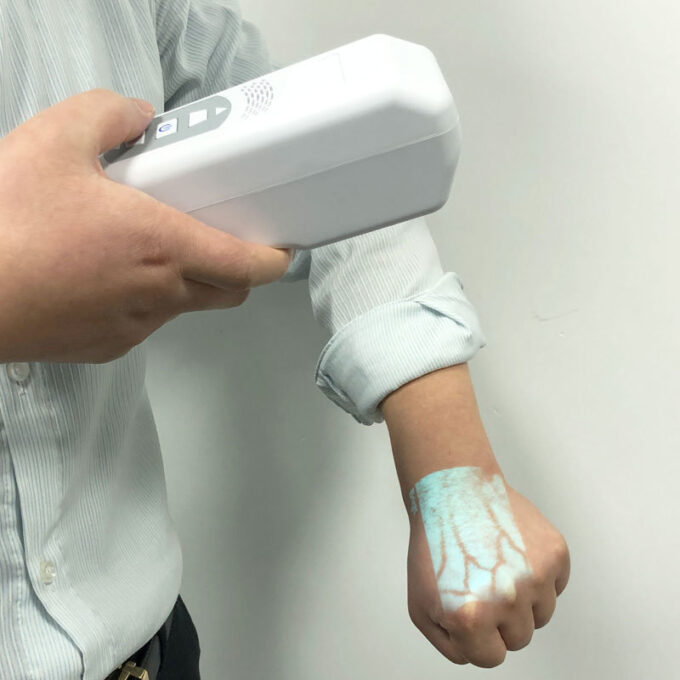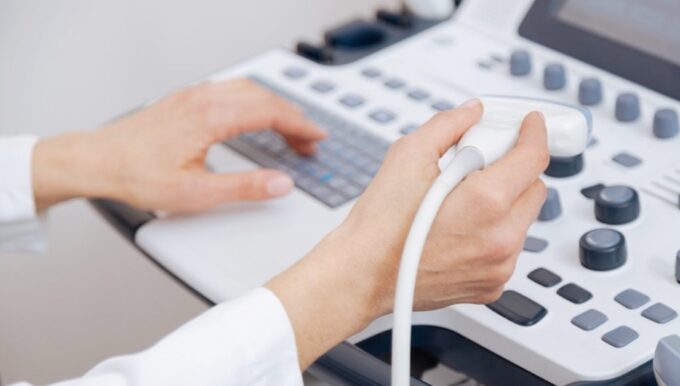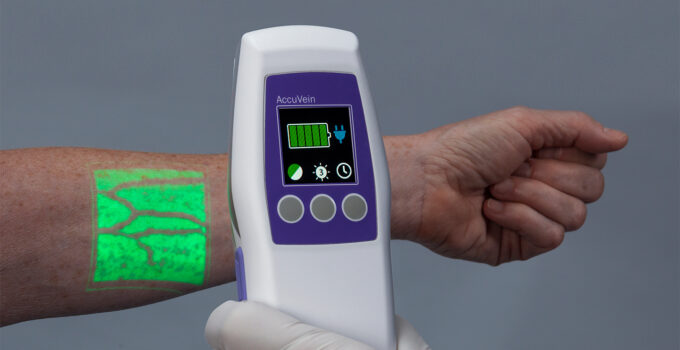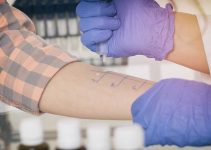Nowadays, there are many tech devices and machines that can be used to find veins. Some of them are quite sophisticated and expensive, while others are more simple and affordable.
If you’re curious about how machines are used to find veins in the human body, you’ve come to the right place. In this blog post, we’ll explore the different types of machines that are used for this purpose, as well as how they work.
We’ll also discuss some of the benefits of using machines to locate veins. So whether you’re a medical professional or simply curious about this topic, read on to learn more.
Different Machines Used for Finding Veins
Vein Finder:

A vein finder is a small, hand-held device that uses infrared light to locate veins beneath the skin. This nifty little machine uses infrared light to map out veins, making it easier for phlebotomists to draw blood.
This can be helpful when trying to start an IV or draw blood. The machine projects a bright light onto the skin, which makes the veins more visible. Vein finders can be handheld or tabletop models, and some even come with a built-in camera so you can see the veins on a screen.
Benefits:
- The main benefit of using a vein finder is that it makes it easier to find veins, which can be difficult to locate, especially if the person has dark skin.
- It can also help phlebotomists to avoid hitting nerves, which can be painful for the patient.
- Additionally, it helps reduce the number of sticks that are used while finding veins.
How to Use It:
To use a vein finder, simply hold it against the skin and look for the veins that appear on the screen.
Then, using a sterile needle, insert the needle into the vein and draw the blood.
Make sure to clean the area afterward to prevent infection.
Ultrasound Devices:

Source: deltamed.pro
Ultrasound devices use sound waves to create an image of the veins. This image is then projected onto a screen, making it easier for the phlebotomist to locate the veins.
Ultrasound devices can be handheld or tabletop models.
Benefits:
Ultrasound devices offer a number of benefits:
- First, they allow phlebotomists to see the veins before sticking the needle in, which can help to avoid hitting nerves or arteries.
- Second, they can be used on patients with dark skin, as the sound waves can penetrate through the skin.
- Third, they can be used to locate veins that are hidden under fatty tissue.
- Lastly, they are more effective than most of the other methods out there.
However, the only downside of these devices is that they can only be used in medical settings and not at home. Moreover, you are also required to have the proper training to use these devices, whereas such is not the case with other methods.
How to Use It:
To use an ultrasound device, simply apply some gel to the area where you’ll be scanning. This helps the sound waves travel more easily through the skin.
Now, hold the ultrasound device against the skin and move it around until you see a clear image of the veins beneath the surface. Once you’ve found a good vein, clean off the gel and get ready to insert your needle!
Which Device is Right for You?

Given the above information, both vein finders and ultrasound devices have their own set of pros and cons.
Though ultrasound may seem like a better choice, it’s important to keep in mind that these devices can only be used under medical supervision and not at home.
If you’re looking for a device that you can use at home, then a vein finder like AimVein and Accuvein can be your best option.
These devices are small, easy to use, and relatively inexpensive. Moreover, they are easily available in online stores and in most drugstores.
FAQs
How can you find veins without a machine?
There are a few ways to find veins without using a machine. One way is to look for the bulging, bluish-colored veins that are close to the surface of the skin. Another way is to feel for the pulse in the wrists, elbows, or neck. Lastly, you can use a tourniquet to make the veins more visible.
Can you use a vein finder on yourself?
Yes, you can use a vein finder on yourself. However, it’s important to do it under supervision for the first time.
Once you get the hang of it, you can use it on yourself without any problem.
What is the most effective way to find veins?
It depends on personal preferences as well as the patient’s condition. However, some of the most effective ways to find veins include using a vein finder or an ultrasound device.
Both of these methods offer a number of advantages and can be used in different settings.
What makes a vein easier to find?
There are a few things that make veins easier to find. First, the veins should be close to the surface of the skin. Second, the veins should be large and not too deep. Lastly, the area should be well-lit so that you can see the veins more easily.
How do you keep veins from collapsing?
There are a few ways to keep veins from collapsing. Drink plenty of fluids so that your veins are hydrated. Avoid wearing tight clothing that constricts the veins. And lastly, avoid sitting or standing in one position for too long. This can cause the veins to collapse.
Takeaway
Veins are often difficult to find and access, which is why a variety of machines have been designed to help locate and puncture them.
The most common types of machines include ultrasound and near-infrared vein finders, which use sound waves and infrared light to create an image of the veins respectively.
Each of these methods has its own advantages and disadvantages, making them more or less suitable for different settings and patients.
With advances in technology, it is likely that even more sophisticated machines will be developed in the future to help locate and access veins. We hope that this article has helped you understand the different types of machines that are available and how they work.







